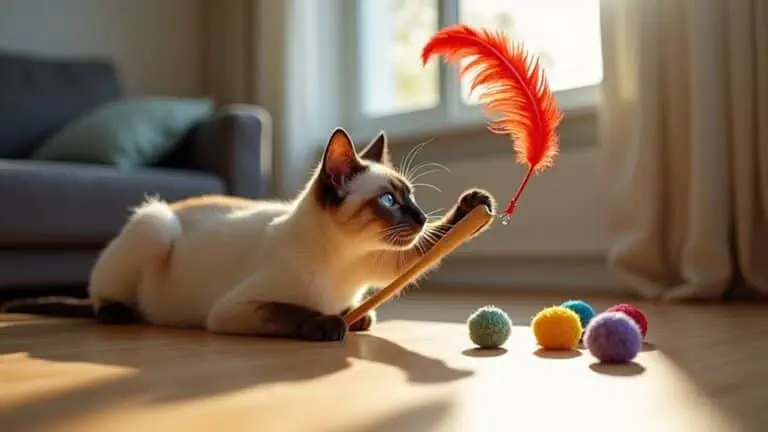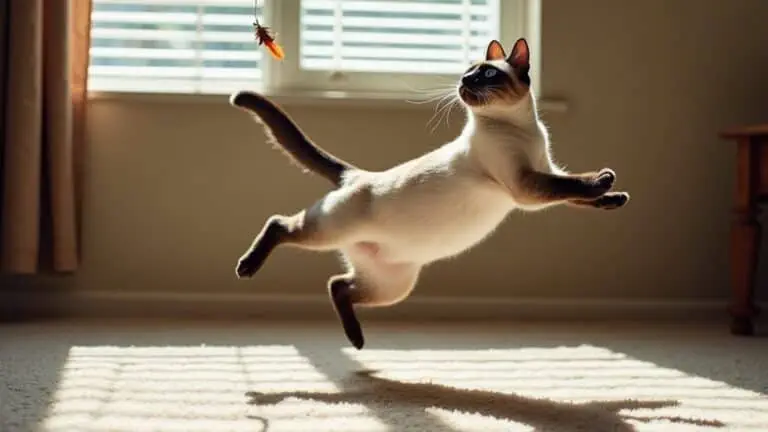The Best Fluffy Pancakes recipe you will fall in love with. Full of tips and tricks to help you make the best pancakes.

In the quest for forever homes, stray cats face an uphill battle, often overshadowed by the quicker adoptions of owner-surrendered counterparts.
This article delves into the disparities influencing feline adoption rates, shedding light on the biases and presentation strategies that sway prospective adopters.
As advocates for animal welfare, it is imperative to explore and rectify these underlying issues, paving the way for increased adoptability of these deserving stray felines.
Key Takeaways
- Shelter records show that owner-surrender cats are adopted faster than stray cats.
- Stray cats have a disadvantage in terms of adoptability compared to previously owned cats.
- Time to approach a potential adopter influenced adoption time for stray cats only.
- Providing more information about stray cats, such as their likes and dislikes, could increase their adoptability.
Adoption Rate Disparities
The disparity in adoption rates between stray cats and those previously owned is a significant challenge that shelters face. Strays often remain in care for longer periods due to biases in adopter preferences. Factors affecting stray cat adoption rates include misconceptions about their health and behavior, a lack of history, and lower perceived friendliness.
To address these issues, shelters might implement strategies for increasing stray cat adoptability. For instance, they could offer detailed descriptions of each cat’s personality and preferences. Sharing stories that highlight their resilience and capacity for affection can also shift perceptions.
Moreover, socialization programs and interactive shelter environments can demonstrate strays’ potential as loving companions. These initiatives can help mitigate biases and facilitate quicker adoptions.
Study Insights on Adoptability
Within the context of feline adoptability, recent studies illuminate significant biases against stray cats, revealing a clear preference for cats with a known history. These insights suggest that the impact of visual presentation and readily available information can greatly influence potential adopters. Stray cats often lack a narrative that can resonate with those looking to adopt, underscoring the importance of creating compelling profiles for these animals.
The role of age and sex also plays a pivotal part in adoptability. Younger cats and those of a particular sex may be favored, adding another layer of complexity to the plight of strays. Advocates stress the need for shelters to provide detailed, empathetic portrayals of strays to bridge the gap in perceived adoptability, ensuring every cat has an equal opportunity to find a loving home.
Influencing Factors for Adoption
Several factors contribute to the adoption disparities between stray and previously owned cats, including age, sex, and the presence of a compelling backstory. Factors affecting stray cat adoption rates are crucial in understanding how to bridge this gap.
The impact of presentation on adoption times cannot be overstated; a well-articulated history and character profile of a stray cat can evoke empathy and a connection with potential adopters. Providing detailed information that highlights a stray cat’s personality traits and preferences is a compassionate approach that can significantly shorten their wait for a forever home.
It is pivotal that shelters and rescues consider these factors to enhance the visibility and desirability of strays, ensuring they are viewed with the same affection and potential as their previously owned counterparts.
Perception of Stray Cats
Many potential adopters harbor a bias against stray cats, perceiving them as less desirable than their previously owned counterparts. This stray cat stigma can significantly impact their chances of finding a forever home. Overcoming misconceptions about strays is critical in changing this perception.
Stray cats can be just as loving, social, and adaptable as any other cat given the right care and environment.
- Stray cat stigma: Misbelief that strays are less friendly or healthy.
- Behavioral misconceptions: Strays are often wrongly presumed to be feral or untamable.
- Adaptability: Strays can adjust remarkably well to home environments.
- Health concerns: Many believe strays carry more diseases, despite shelters performing health checks.
- Bonding potential: Strays can form deep bonds with adopters, challenging the notion that they’re less affectionate.
Increasing Stray Cat Adoptability
Addressing the misconceptions surrounding stray cats is essential to boost their chances of adoption. By implementing behavioral enrichment programs, shelters can showcase the adaptability and affectionate nature of these animals, thus altering public perception.
Enhanced marketing strategies that spotlight individual personalities and endearing quirks can foster a more profound connection with potential adopters. Descriptive narratives and engaging visuals can serve as powerful tools, transforming the image of the stray from a symbol of neglect to one of resilience and hope.
Providing detailed profiles that include the cat’s likes, dislikes, and unique characteristics can help prospective owners envision a stray cat as a beloved part of their family, ultimately increasing the likelihood of adoption.
Presentation to Potential Adopters
In light of the need to increase stray cat adoptability, the manner in which these animals are presented to potential adopters warrants careful consideration. The role of first impressions cannot be overstated; a positive initial presentation can significantly enhance a cat’s chances of finding a forever home. The power of storytelling is equally important; sharing a stray cat’s journey can create a compelling narrative that resonates with compassionate individuals.
- Highlight unique personalities and quirks to make each cat stand out.
- Use appealing photos that showcase the cat’s best features.
- Provide detailed descriptions that include likes, dislikes, and charming behaviors.
- Share success stories of previously adopted strays to inspire potential adopters.
- Emphasize the positive impact of adopting a stray on both the animal and the adopter.
Impact of Information Availability
The availability of detailed information about stray cats significantly influences their chances of being adopted. When potential adopters have access to comprehensive behavioral descriptions, they can better envision the cat as part of their family. Hence, the impact of information availability is profound. Providing narratives that articulate a stray cat’s personality—whether they ‘enjoy playtime’ or ‘love cheek rubs’—transforms them from anonymous strays into individual beings with endearing traits.
The effectiveness of behavioral descriptions in facilitating these feline-human connections cannot be overstated. It is vital to advocate for shelters to invest time in discovering and sharing each cat’s unique story. Doing so not only serves the cats by enhancing their adoptability but also enriches the lives of those who welcome them into their hearts and homes.
Behavioral Descriptions and Names
Behavioral descriptions and assigned names significantly enhance the appeal of stray cats to potential adopters. Inclusion of personality in behavioral profiles allows cats to be seen as individuals, creating connections that transcend their stray status.
This personalized approach can have a profound impact on adoption rates. When potential adopters can envision a cat’s character and quirks, they are more likely to feel a personal bond and consider adoption.
Personalized names humanize and distinguish each cat.
Descriptive behaviors showcase unique personalities.
Emotional stories foster deeper empathy.
Adoption narratives can highlight resilience and adaptability.
Positive language encourages optimistic views of adoption.
Future Research Directions
To address the disparity in adoption rates between stray and previously owned cats, future research must rigorously investigate the influence of presentation and information provision on potential adopters’ decision-making processes.
Exploring intervention strategies that enhance the visibility and perceived adoptability of strays is vital.
Evaluating adoption success factors, such as the effect of providing names and behavioral descriptions, will offer concrete data to guide shelters in policy formulation and practice. Empathy towards these felines and a commitment to their welfare should drive such studies.
Researchers must focus on creating a more equitable landscape for all cats seeking homes, ensuring that biases do not impede the chance of strays finding loving families.
Improving the Adoption Process
Several strategies can be implemented to enhance the adoption process for stray cats, aiming to reduce the bias they currently face. By conducting a thorough adoption process evaluation, shelters can identify areas needing improvement. Implementing adoption support programs is also critical for helping potential adopters understand the value of rescuing stray cats.
Consider the following points:
- Regularly assessing the adoption procedure for efficiency and inclusiveness.
- Creating educational materials emphasizing the positive traits of stray cats.
- Offering post-adoption support and resources to new pet owners.
- Establishing community outreach initiatives to raise awareness of stray cat adoption.
- Forming partnerships with local businesses to host adoption events.
Each of these tactics is essential in transforming the prospects of stray cats and ensuring they find loving homes.
Is the Bias in Cat Adoption affecting Stray Cats More Than Ragdolls?
The bias in cat adoption is evident, with ragdolls compared to other cats often receiving preferential treatment. This bias can negatively affect stray cats, as they may be overlooked in favor of more popular breeds. It’s essential for adopters to consider all cats equally, giving every feline a chance for a loving home.
FInal Thoughts
In conclusion, addressing the perceptual and behavioral biases against stray cats is essential for equalizing their adoption prospects.
Presenting strays with detailed behavioral descriptions and appealing names, alongside increased information transparency, can mitigate existing prejudices.
Continued research and innovative presentation strategies are imperative to improve the adoption process, ultimately ensuring that all cats, irrespective of their origin, enjoy equitable opportunities to secure loving homes.
Enhanced adoption practices stand as a testament to an inclusive and compassionate society.








